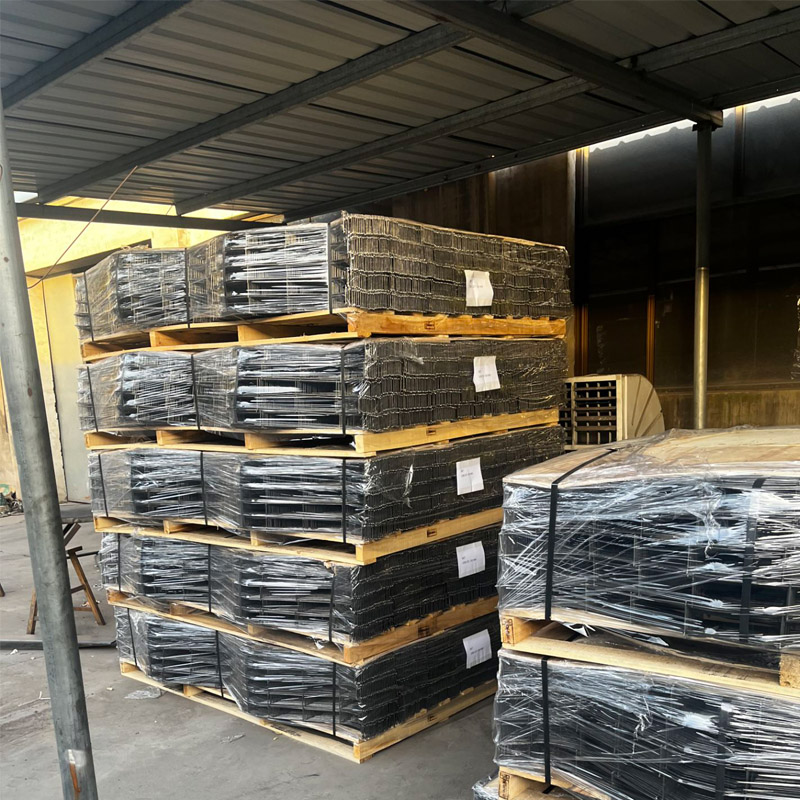
- Mobile Phone
- +8613931874955
- sales@cntcmetal.com
Innovative Solutions for Enhancing Lateral Wall Stability in Construction Projects
Lateral Wall Ties Ensuring Structural Integrity in Modern Architecture
In the realm of modern architecture and construction, ensuring the structural integrity of buildings has become more crucial than ever. Among the various techniques and materials used to facilitate this, lateral wall ties play a significant role. These specialized connectors serve as a key component in maintaining stability and strength, particularly in masonry structures.
Understanding Lateral Wall Ties
Lateral wall ties, also known simply as wall ties, are metal fasteners that connect two separate walls or components within a structure. They are primarily used in masonry construction, where they help to secure wall panels and prevent them from leaning or collapsing under lateral loads, which are often caused by wind, seismic activity, or other external forces. The effective use of lateral wall ties helps to distribute loads evenly across the walls, providing additional support and stability to the overall structure.
Importance in Construction
The need for lateral wall ties has grown alongside advancements in construction technology and the increasing height and complexity of modern buildings
. In traditional building methods, walls were often constructed with materials such as bricks or blocks, which, while sturdy, can become unstable if not properly reinforced. The introduction of wall ties has transformed this scenario, allowing engineers and architects to explore innovative designs without compromising safety.By incorporating lateral ties into the design of a building, construction teams can enhance resistance to lateral forces. For instance, during a windstorm, lateral ties can help prevent walls from bowing or detaching, thereby protecting the building’s integrity. In seismic-prone regions, the ability of wall ties to reduce sway and movement during an earthquake is invaluable, making them a key element in earthquake-resistant design.
Types of Lateral Wall Ties
There are several types of lateral wall ties, designed to meet specific building needs and materials. Common types include
1. Dovetail Ties These ties are used where strength is paramount. They are anchored into the mortar joint and provide a robust connection between walls.
lateral wall ties

2. Plate Ties Often used in thin walls, plate ties feature a flat plate on one end, spreading the load across a larger area, which is beneficial for preventing cracking.
3. Tension Ties These are designed to handle tension forces and are often used in structures that experience significant pulling forces.
4. Expansion Ties Used to accommodate the expansion and contraction of materials, these ties ensure that walls remain secure throughout changing temperatures.
Each type has its specific applications and benefits, making it essential for architects and engineers to select the appropriate wall tie based on the construction requirements.
Considerations for Installation
The installation of lateral wall ties must be executed with precision. Factors such as spacing, material choice, and the technique of installation all contribute to the effectiveness of the ties. Generally, the spacing recommendations depend on the building’s height, the material of the walls, and local building codes. For example, more closely spaced ties are needed in taller buildings and in areas susceptible to heavy winds or seismic activity.
Furthermore, the material of the wall ties themselves is critical. Stainless steel is often preferred due to its durability and resistance to corrosion, ensuring a long service life. Other materials may be suitable depending on the specific environmental conditions and the type of materials used in the construction of the walls.
Conclusion
Lateral wall ties are an indispensable aspect of modern construction, providing essential support to masonry structures. As architectural designs evolve and become increasingly ambitious, the role of wall ties will only grow in importance. By understanding their significance and proper application, builders can create safe, durable, and resilient buildings that stand the test of time. As construction technology progresses, the innovation in materials and designs for lateral wall ties will undoubtedly enhance structural integrity, ensuring that future architectural marvels remain steadfast against the forces of nature.
In summary, lateral wall ties are more than just connectors; they are lifelines that hold our structures together, embodying the essential balance between aesthetic appeal and engineering prowess.
share:
-
Your Source for Concrete Wall Ties and Masonry AccessoriesNewsJul.10,2025
-
Unlocking the Power of Iron Wire for Every ProjectNewsJul.10,2025
-
Explore Advanced Chain Wire and Stainless Steel Mesh FencingNewsJul.10,2025
-
Discover the Benefits of Annealed Wire ProductsNewsJul.10,2025
-
Discover China Stainless Steel Wire Mesh SolutionsNewsJul.10,2025
-
Build with Confidence Using High-Performance Masonry AccessoriesNewsJul.10,2025
-
Why Sacrificial Formwork Is Redefining Underground ConstructionNewsJun.06,2025



















